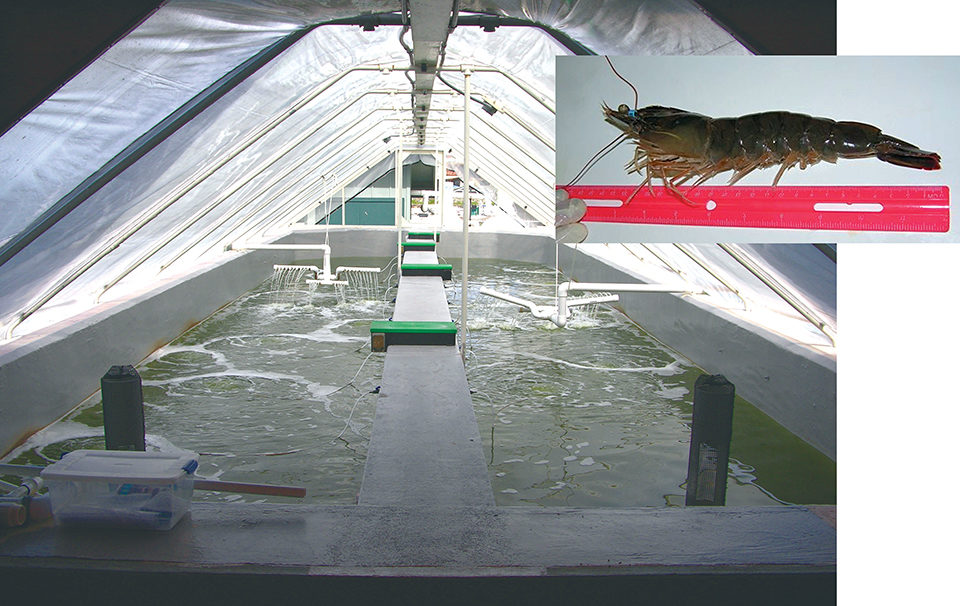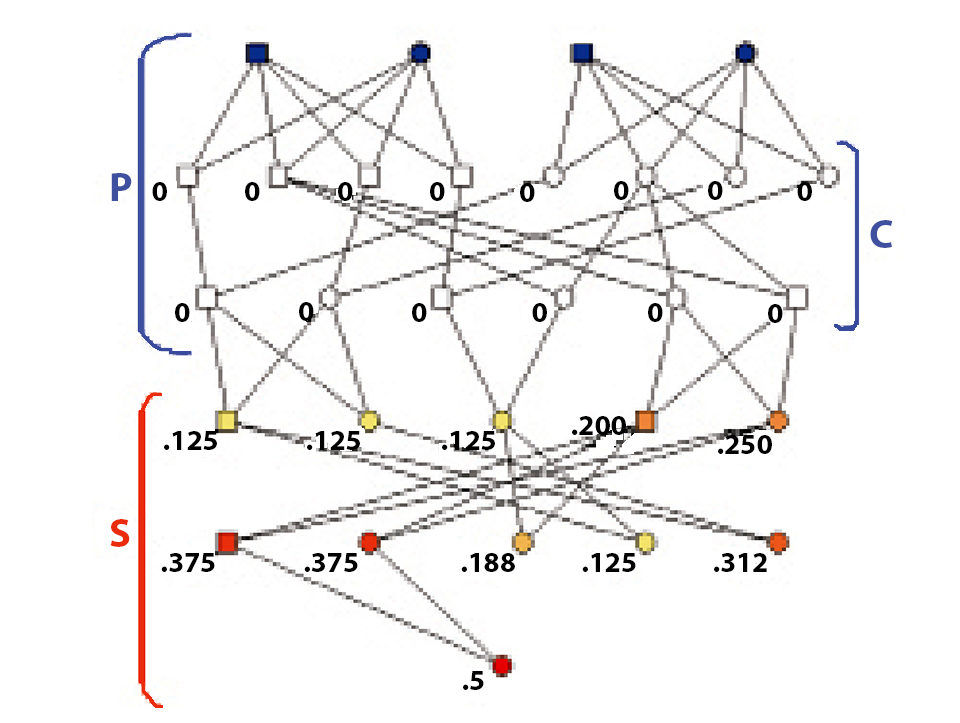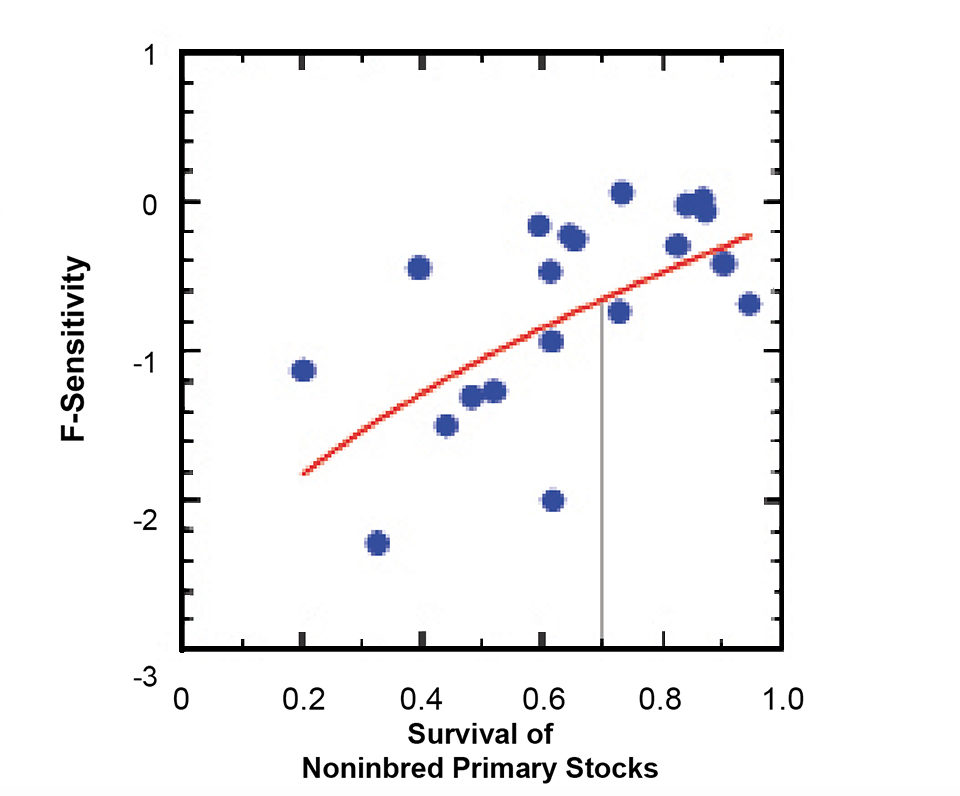Quantitative effects on the survival of later generations can be surprising

Shrimp breeders have invested a lot of money in the development of genetically improved broodstock because they want a bigger share of the world market for breeders and postlarvae (PLs). But how can they profit from their investment if their customers propagate the broodstock they buy, without permission? Or even worse, what can they do if their customers compete with them by selling postlarvae at a price that does not reflect the cost of genetic research and development?
Breeders often protect their investments in genetics through programs based on inbreeding. The general procedure is widely known, but using the formula below, the quantitative estimate of inbreeding effects on the survival of later generations can be surprising.
In the following, shrimp directly produced in genetic improvement programs are called primary stock. These include broodstock sold to multiplier hatcheries, as well as their offspring, which are sold to farmers as PLs for commercial grow-out. Broodstock and PLs that multiplier hatcheries produce by breeding primary stocks without permission for any number of generations are called secondary stocks.
Protecting primary stocks
By understanding a few basic steps, shrimp breeders can protect their investment in their primary stocks by incorporating inbreeding strategies.
Step 1
The shrimp breeder chooses four of the best mature shrimp from the broodstock to be parents of the production breeders in the following year. The selected shrimp should be best both in terms of their own phenotype and the known genetic quality of their near relatives, as well. Identifying the “best” animals constitutes 90 percent of the art of aquaculture genetics. As an illustration, four primary breeders, two males and two females, are colored blue and placed at the top of the pedigree diagram in Fig. 1.

Step 2
One pair of blue primary breeders is used to produce thousands or tens of thousands of brothers, while the other pair produces a similar number of sisters. These two set of siblings are matured to become the production breeders.
Although each pair of primary breeders provides offspring of only one sex to the protection scheme illustrated in Fig. 1, the offspring of the other sex need not be wasted. They can be used to produce another line of protected breeders.
Sometimes production breeders are sold to custom-ers, and sometimes the PLs produced by mating them are sold. Whichever stage is sold, no inbreeding is added.
Step 3
The customer of the primary breeding company grows the PLs or mates breeders he purchased. Inbreeding does not occur in the shrimp grown to harvest. All is well.
Inbred secondary stocks
Unauthorized reproduction of primary animals as secondary stocks leads to progressive inbreeding, as described below.
Step 1
The customer grows and then matures PLs purchased from the primary hatchery or produced by the purchased primary breeders, and mates them among themselves to generate a secondary stock (row 4 in Fig. 1). Inbreeding, denoted F, will be either 0.125 or 0.25 in the first generation of a secondary stock.
The proportion of the two inbreeding levels in the secondary stock depends on the number of secondary spawners and their family relationships. The customer is now a secondary producer. He has no family relationship information to use for minimizing inbreeding in the shrimp and doesn’t know the inbreeding level of any particular family of shrimp.
Step 2
Secondary spawning continues for more generations and inbreeding increases quickly, as shown in Fig. 1. Again, the proportion of families with a given level of inbreeding varies with the numbers of spawners and relationship information, which is not available. An inbreeding level of F = 0.5 (equivalent to self-fertilization) is reached by some families in the third generation in a well-planned broodstock protection scheme. Inbreeding continues to accumulate in later generations.
Inbreeding depression, copy protection
The F value of inbreeding is not in itself enough to help people make decisions. What everyone wants to know is the extent to which any given value of inbreeding depresses growth, reproductive performance, and survival in secondary stocks.
Workers at the Oceanic Institute in Hawaii, USA, have found that inbreeding depression in Pacific white shrimp (Litopenaeus vannamei) depends on the quality of the environment. Environmental quality can be quantitatively characterized in this context as the survival of noninbred shrimp.
Data show that the worse the environment – i.e., the lower the survival of noninbred shrimp – the larger the depressive effect on inbred shrimp. The depression of growth rate and reproductive performance appears to be qualitatively similar to survival, but possibly somewhat less for growth and more for reproduction.
The magnitude of the effect is shown in Fig. 2, where inbreeding depression is represented on the vertical axis by the variable F-sensitivity. F-sensitivity is the slope of the linear relationship between survival and inbreeding in a particular environment. The quality of the environment is measured on the horizontal axis by the survival rate of noninbred shrimp. When the environment is poor, and noninbred shrimp have low survival, the effect on the survival of inbred shrimp is strongly negative, i.e. they are very sensitive to inbreeding.

The following is a summary of F-sensitivity estimates in environments where survival of noninbred shrimp ranged from high to low because of experimental variations in salinity, challenges with viral pathogens, etc.
Predicting broodstock protection
If the survival of the primary stock where inbreeding is zero is 70 percent, what should the survival of a family with inbreeding F = 0.25 be in the same environment? The thin black lines in Fig. 2 illustrate how to use this diagram to predict the effectiveness of copy protection.
Reading upward from 0.7 (70 percent survival) on the horizontal axis to the curved regression line, then sideways back to the vertical axis, we see that the F-sensitivity in that environment is about -0.65. Survival of secondary stocks with F = 0.25 can now be estimated from the formula:
Secondary survival = primary survival + (F-sensitivity x F).
Thus, in the above illustration, secondary survival is expected to equal 0.70 + (-0.65 x 0.25) = .5375 or about 54 percent – 16 percent lower than the noninbred shrimp. This may not be enough to worry about. But when the environment deteriorates and survival of the primary stocks falls, the results are not so good.
If primary stock survival drops to 40 percent, secondary stocks with 0.25 inbreeding would have 0.4 + (-1.3 x 0.25) = 8 percent survival, a serious problem. At primary stock survival of 50 percent, the survival of secondary stocks with F = 0.375 would be about 11 percent, while secondaries with 0.5 inbreeding would face total mortality.
The effect of broodstock protection is fairly clear in these examples. When the environment is good and the survival of noninbred shrimp is greater than 50 percent, inbreeding depression won’t cause much of a problem until the third generation of illegal production. But in times of stress, when dissolved-oxygen concentration, water temperature, disease, or some combination of these factors reduces primary survival, secondary stocks are at a high risk of being wiped out in one or two generations.
Controlling multiplier hatcheries
The broodstock protection scheme in Fig. 1 is very simple, and additional protective steps can be taken. For instance, if a secondary breeder (multiplier hatchery) accumulates several batches from the primary stock and treats them as separate “families” to escape inbreeding, a canny primary breeder need merely create appropriate family relationships among the primary parents of successive batches.
These extra relationships will cause secondary inbreeding if several multiplier hatcheries band together to crossbreed primary stocks purchased in separate batches. Of course, these protective steps add a bit to the operating cost of the genetic improvement program, but not very much in a program that is set up properly.
If secondary breeders hybridize protected shrimp with stocks from an entirely different population to avoid inbreeding, the initial secondary generation will be noninbred, but inbreeding will accumulate quickly after that because of the close family relationship among one-half of the parents in the hybrid cross.
Genetic traps effective
There is not a lot secondary breeders can do to escape the genetic traps set by vigilant primary breeders. The best strategy for multiplier hatcheries is to purchase the latest generation of improved broodstock every year. For hatcheries unwilling to do that, the authors’ best advice is to spawn as many breeders as possible, keep track of what generation of illegal PLs is being produced, and hope for really nice weather in generation 4.
(Editor’s Note: This article was originally published in the April/May 2006 print edition of the Global Aquaculture Advocate.)
Now that you've finished reading the article ...
… we hope you’ll consider supporting our mission to document the evolution of the global aquaculture industry and share our vast network of contributors’ expansive knowledge every week.
By becoming a Global Seafood Alliance member, you’re ensuring that all of the pre-competitive work we do through member benefits, resources and events can continue. Individual membership costs just $50 a year. GSA individual and corporate members receive complimentary access to a series of GOAL virtual events beginning in April. Join now.
Not a GSA member? Join us.
Authors
-
Roger W. Doyle, Ph.D.
Genetic Computation Ltd.
4630-1 Lochside Drive
Victoria, British Columbia, Canada V8Y 2T1[109,111,99,46,112,109,111,99,101,110,101,103,64,101,108,121,111,100,114]
-
Dustin R. Moss, M.S.
The Oceanic Institute
Waimanalo, Hawaii, USA -
Shaun M. Moss, Ph.D.
The Oceanic Institute
Waimanalo, Hawaii, USA
Tagged With
Related Posts

Health & Welfare
Developmental transcriptomes from penaeid shrimp
To develop an alternative mechanism for genetic copyright of improved shrimp lines, the authors used a bioinformatics approach to identify germ line genes that could be potentially targeted to ablate the germ line.

Intelligence
DNA profiling verifies origins of seafood products
DNA profiling not only identifies mislabeled seafood products, but it can also differentiate between different strains of the same species.

Health & Welfare
Field performance of imported SPF shrimp in Brazil
Combined analyses of SPF shrimp from six imported lines and one commercial genetically improved line in Brazil found excellent winter performance.

Health & Welfare
Flatfish conditioning for stock enhancement
Acclimation cages, the most implemented conditioning strategy for flatfish, are inexpensive and effective, but require site-specific adjustment. Live or lifelike diets show great potential in rearing stocked flatfish.


